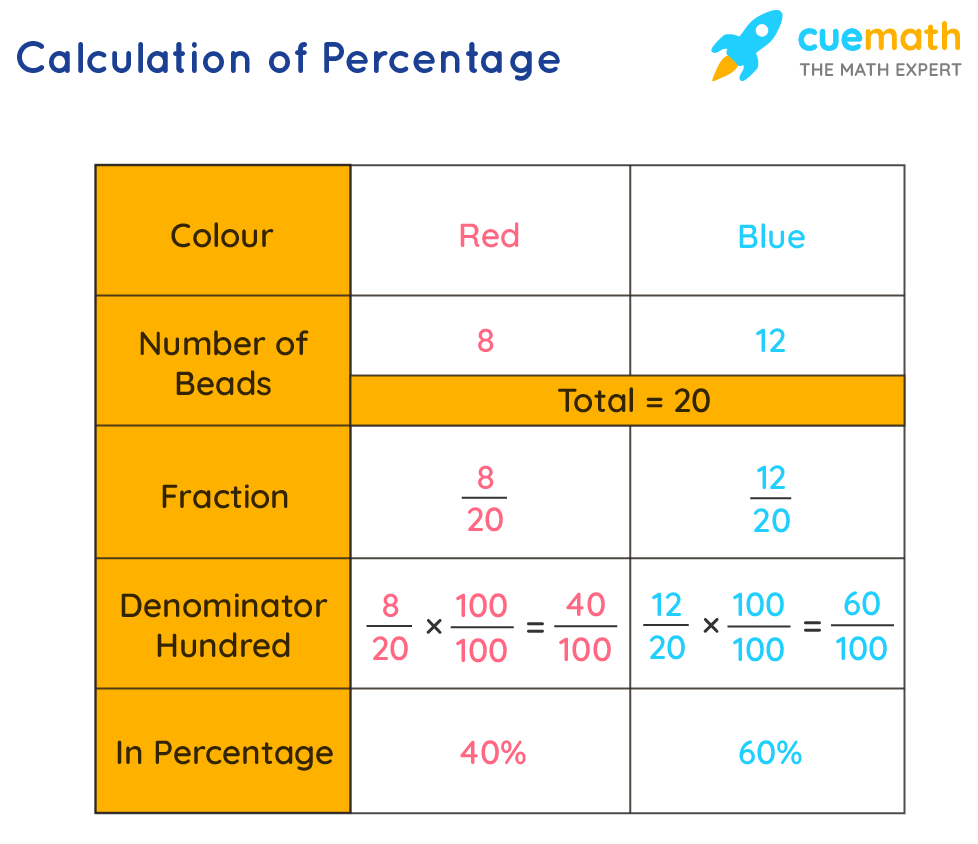The expression "rate" was adjusted from the Latin word "per centum", which signifies "in huge numbers". Rates are divisions with 100 as the denominator. As such, it is the connection among part and entire where the worth of entire is constantly taken as 100.
What is Percentage?
Rate is a small portion or a proportion where the worth of entire is consistently 100. For instance, if Sam scored 30% imprints in his numerical test, it implies that he scored 30 stamps out of 100. It is composed as 30/100 in the division structure and 30:100 as far as proportion.
Rate Definition:
Rate is characterized as a given part or sum in each hundred. It is a portion with 100 as the denominator and is addressed by the image "%".
Computation of Percentage
Working out rate means to track down the portion of an entire, as far as 100. There are two different ways to track down a rate:
By utilizing the unitary strategy.
By changing the denominator of the portion to 100.
It ought to be noticed that the second strategy for computing rate isn't utilized in circumstances where the denominator isn't an element of 100. For such cases we utilize the unitary strategy.
How to get a Percentage?
Percent is one more name for showing hundredths. Hence, 1% is 100th, that implies 1%=1/100=0.01.
How about we ascertain rate utilizing the two strategies given previously.
At the point when we have at least two qualities that amount to 100, then, at that point, the level of those singular qualities to the complete worth is that number itself. For instance, Sally purchased tiles of three distinct shadings for her home. The subtleties of the buy are given in the accompanying table.
| Colour | Number of Tiles | Rate per Hundred | Fraction | Written as | Read as |
| Yellow | 39 | 39 | 39/100 | 39% | 39 percent |
| Green | 26 | 26 | 26/100 | 26% | 26 percent |
| Red | 35 | 35 | 35/100 | 35% | 35 percent |
Since the total number of items adds up to 100, the percentages can be easily calculated.
What if the total number of items do not add up to 100? In such cases, we convert the fractions to equivalent fractions with the denominator as 100.
For example, Emma has a bracelet which is made up of 20 beads of two different colours, red and blue. Observe the following table which shows the percentage of red and blue beads out of the 20 beads.

Emma's sisters, Nora and Jenny, determined the rates too, however in various ways.
Nora utilized the unitary strategy. Utilizing the unitary strategy for ascertaining rate, we say that out of 20 dots, the quantity of red dabs are 8. Henceforth, out of 100, the quantity of red dots will be 8/20 × 100= 40%.
Jenny changed over the portion 8/20 into an identical division 40/100 by duplicating the numerator and denominator with 5/5.
Along these lines, 8/20= (8×5)/(20×5)
= 40/100
= 40%
Equation to Calculate Percentage
The rate equation is utilized to track down the portion of an entire as far as 100. Utilizing this recipe, you can address a number as a small part of 100. If you notice cautiously, every one of the three different ways to get rate displayed above can be effortlessly determined by utilizing the equation given beneath:
Percentage= (Value/Total Value)×100
Rate Difference Between Two Numbers
Rate contrast is the adjustment of the worth of an amount throughout some undefined time frame as far as rate. Now and again we want to know the expansion or reduction in some amount as rates, which is additionally alluded to as Percentage Change. For instance, an increment in populace, a lessening in destitution, etc.
We have the equation to show the adjustment of amount as a rate. There are two cases that may emerge while computing rate distinction and those are:
Ascertain rate increment
Ascertain rate decline
How to Calculate Percentage Increase?
Rate increment alludes to the perchange change in the worth when it is expanded throughout some stretch of time. For instance, populace increment, expansion in the quantity of microbes on a surface, and so on Rate increment can be determined by utilizing the accompanying recipe:
Rate Increase= (Increased Value-Original worth)/Original worth × 100
How to Calculate Percentage Decrease?
Rate decline alludes to the perchange change in the worth when it is diminished throughout some undefined time frame. For instance, decline in the degree of precipitation, decline in the quantity of Covid patients, and so forth Rate diminishing can be determined by utilizing the accompanying equation:
Rate Decrease= (Original worth Decreased Value)/Original Value × 100
Focuses to Remember:
To track down the level of an entire, work out the worth of 1% and afterward duplicate it by the percent we really want to find.
An increment or lessening in any amount can be communicated as a rate.
Parts can be changed over into rates as well as the other way around.
Rates are reversible. For instance, 25% of 40 is as old as of 25.




